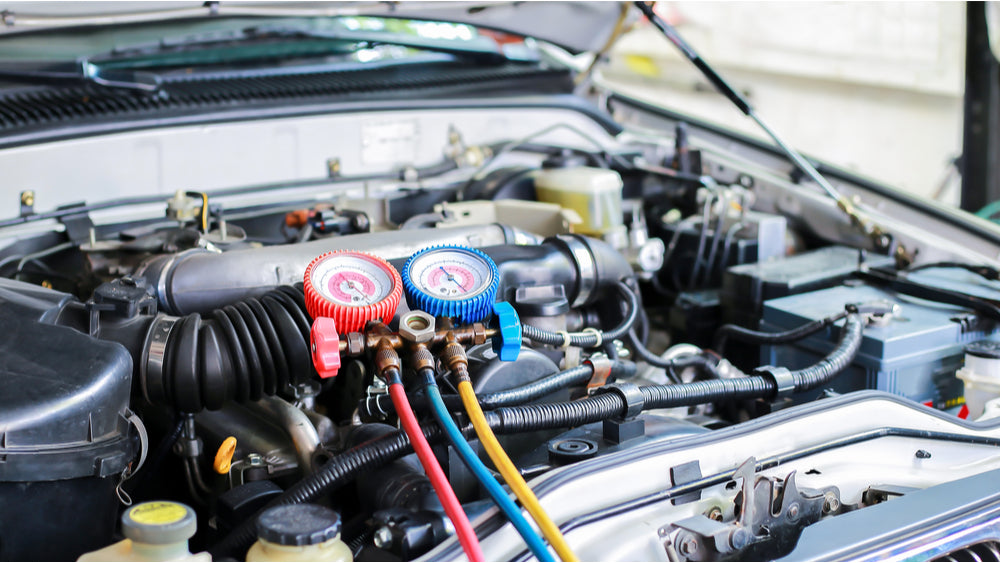Automotive Air Conditioning System
Hardly can anyone recount the positive impact of technology on every aspect of human life without mentioning transportation, particularly automobiles. Thanks to this beautiful invention, the convenient movement of individuals from one place to another was made possible. Imagine a world without cars; sincerely, it’s unimaginable!
Cars are indeed wonder-inventions; there's no denying that. What's more amazing is the never-static nature of technology, which is the reason why we are talking about AC-fitted cars right now. Just by a button touch, it’s possible to transform the ambiance of your car into a cool spot for maximum comfort when driving. What makes your car cold is its automotive air-conditioning system; not magic.
With this write-up, we intend to familiarize you with your car’s air conditioning system, its component parts, and how it chills your car.
What Makes Up Your Car Air Conditioning System?

An automotive air conditioning system is a system with sub-parts. These are the functional parts that work together to produce the cooling sensation the automotive A/C system provides. Let’s quickly get you familiar with the essential parts of your car’s AC:
-
Compressor
This is the hub of your car’s air conditioning system. Functionally, the compressor performs two basic operations. It compresses refrigerant gas and transports it. The compressor operates like a pump; it transports refrigerant gas from the suction side of the evaporator to the condenser.
-
Evaporator
The evaporator absorbs heat, and it's usually located inside a car. What it does primarily is to remove heat from your car. Another function performed by the evaporator is dehumidification. This means that it removes every form of vapor from your vehicle. Have you noticed that during humid days, water drips from beneath your car? This is nothing to worry about. It’s the evaporator performing its function of dehumidification.
-
Condenser
This is another important part of your car’s A/C system. The condenser functions like a typical radiator. It cools off hot refrigerant gas coming from the compressor, and then releases the now cooled refrigerant as a high-pressure liquid.
-
Orifice tube
Not all car’s air conditioning systems feature this part but, it's common in most cars. The orifice tube can be housed by the evaporator or located between the condenser and the evaporator. The basic function of the orifice tube is to control the flow of refrigerant gas like the R-134 gas into the evaporator. It helps to achieve balanced cooling in the air conditioning system. Also, it stabilizes the temperature in the evaporator and disallows the elevator from getting excessively cold.
-
Accumulator
This is also known as the receiver. It allows cool air to flow into your vehicle and also regulates its humidity.
-
Filter
The filter is a part of a car's air condition that traps debris in the air flowing through the A/C. It only allows the passage of clean air into the car’s air conditioning system.
-
Thermal expansion valve
This regulates the flow of refrigerant, thus causing it to change from a high-pressure liquid into a low-pressure liquid (mist) before moving it into the evaporator. The expansion valve functions like the orifice tube.
How Is Your Air Conditioning System?
Having looked at the essential parts in a car’s A/C system, let’s now consider how all the parts functions to produce the cooling sensation your car’s air conditioning system offers:
Let's begin by establishing that there are two types of car air conditioning systems. One features a thermal expansion valve, while the other type features an orifice tube. A car's air conditioning system, regardless of its type, features two areas: the high-pressure and low-pressure areas. What the air-conditioning system does is simple. It transports refrigerant from the high-pressure area to the low-pressure area, absorbing heat in the process and giving its final output as chill.
For the car A/C to work, the air-conditioning system must first be filled with R-134 or Freon, which are refrigerant gases. Typically, the refrigerant gas can switch its nature into high-pressured liquid when compressed. The process of compression happens in the compressor, which heats the refrigerant and sends the liquid in hot form to the condenser through the A/C’s hose system.
The condenser absorbs heat from the refrigerant, thus, changing the high-pressured liquid into low-pressured liquid. The condenser then moves the cooled refrigerant to the low-pressure area, where it goes further into the filter, where debris is removed. It then goes into the evaporator through either the expansion valve or the orifice tube, where it is changed into a mist. As the low-pressure mist flows into the evaporator, the blower motor then blows the air into the compartment inside the vehicle, so that the mist can reach all passengers in the vehicle.
Wrap Up
Don't take for granted the information contained in this piece. Understanding how your car’s A/C works can help you know how to care better for your car's air conditioning system.
Order your parts online or contact our sales department.


